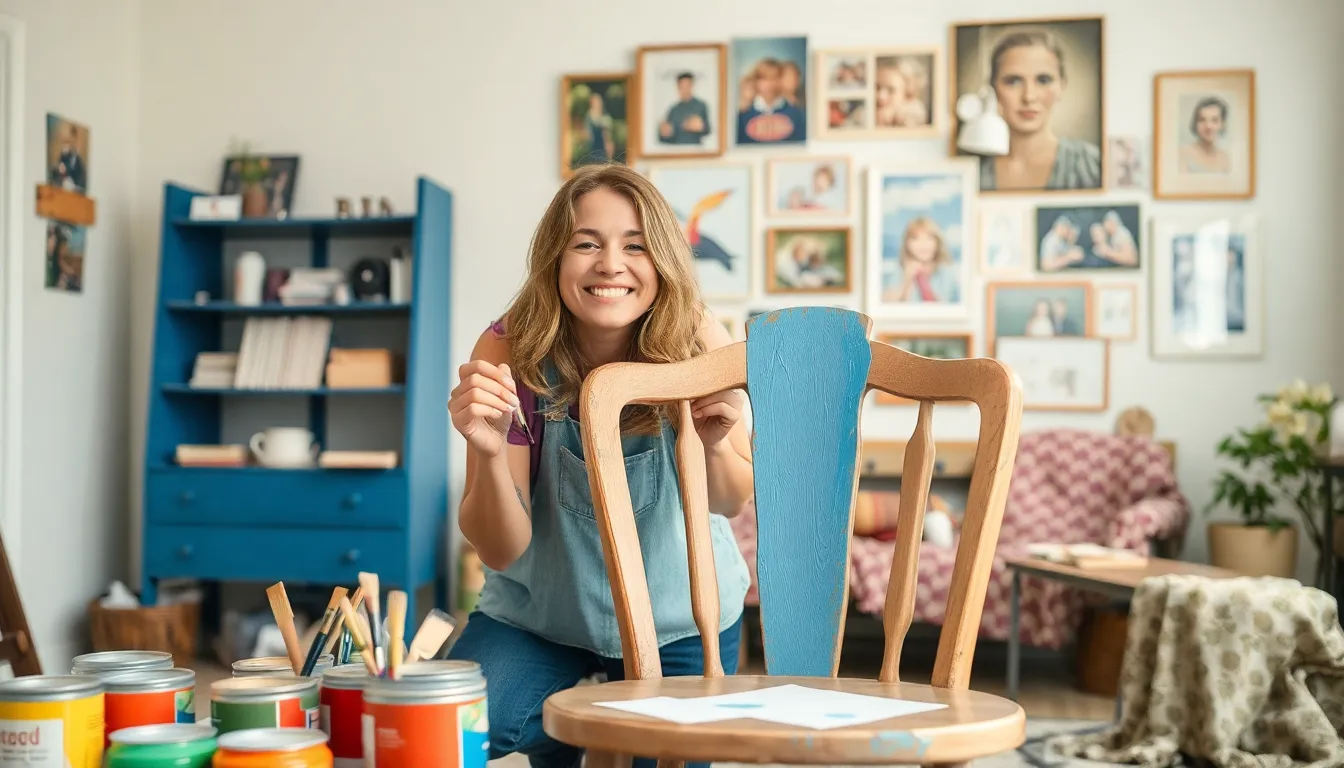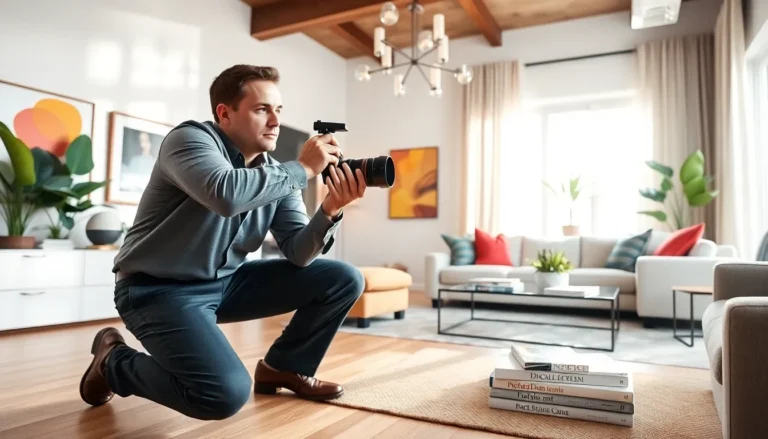Transforming a space doesn’t have to mean hiring a fancy designer or breaking the bank. With DIY interior design, anyone can turn their home into a stylish sanctuary. It’s like giving your space a makeover without the drama of reality TV. Who needs a professional when you’ve got creativity, a few tools, and maybe a YouTube tutorial or two?
Table of Contents
ToggleWhat Is DIY Interior Design?
DIY interior design refers to the practice of individuals taking control of their living spaces. This approach emphasizes personal creativity and resourcefulness, allowing homeowners to create personalized aesthetics. People often utilize basic tools and readily available materials to achieve stunning results.
Online resources play a significant role in the DIY movement. Platforms like YouTube offer countless tutorials, guiding users through various projects. Tutorials range from simple decor adjustments to more complex renovations. Furthermore, blogs and social media channels provide inspiration and tips, expanding the possibilities for DIY enthusiasts.
Cost-effectiveness is a primary benefit of DIY interior design. By avoiding professional fees, individuals allocate budget toward materials or other enhancements. Consequently, many choose to update furniture, paint walls, or repurpose existing items. For example, refinishing old furniture can create a unique, vintage look for any room.
Flexibility is another key aspect of DIY interior design. Homeowners can personalize their spaces according to their tastes and preferences. Projects can vary from minor decor changes to full room makeovers, accommodating any skill level. As a result, a DIY project may involve creating wall art or installing new lighting fixtures.
Community engagement often enriches the DIY experience. Many people share their projects online, fostering inspiration and collaboration. By connecting with others, individuals gain new ideas and techniques. Therefore, DIY interior design becomes a collective journey, enhancing creativity and design skills for everyone involved.
Popular DIY Interior Design Trends

Homeowners increasingly embrace various trends that reflect personal style and creativity. Upcycling furniture and creating gallery walls stand out as popular methods to enhance interiors.
Upcycling Furniture
Upcycling furniture involves transforming old or discarded pieces into functional art. Individuals paint, reupholster, or add decorative elements to revive outdated styles. This approach not only reduces waste but also fosters creativity. A dining table can gain new life with a fresh coat of paint and unique hardware. Simple projects might include refinishing wooden chairs or adding colorful decals to cabinets. Upcycling proves cost-effective, allowing individuals to enjoy unique items without high expenses. As a result, many create one-of-a-kind statements that reflect their personality.
Creating a Gallery Wall
Creating a gallery wall allows homeowners to showcase their personal art collections or family photos creatively. They begin by selecting a variety of frames in different sizes for visual interest. A cohesive color palette enhances the overall look. Individuals often mix artworks, prints, and personal mementos for a unique display. Arranging the frames on the floor before hanging helps visualize the final layout. This project can easily reflect personal interests, whether through travel souvenirs or local artists’ works. Gallery walls also serve as conversation starters, adding character to any space.
Essential Tools and Materials
DIY interior design requires some key tools and materials that make projects easier and more effective. Knowing what to gather leads to successful home transformations.
Basic Tools Every DIYer Needs
Measuring tape ensures accurate measurements for furniture and decor placement. A utility knife proves invaluable for cutting materials like cardboard or foam board. Hammer and nails are essential for hanging pictures or assembling furniture. Screwdrivers, both flathead and Phillips, help secure fixtures and complete installations. Paintbrushes and rollers make applying paint smooth and efficient. Level tools guarantee that shelves and frames hang straight, enhancing aesthetics. Finally, a sturdy step ladder facilitates access to high places for painting or decorating.
Must-Have Materials for Interior Projects
Paint contributes to the entire look and feel of a room, allowing for unique colors and finishes. Wallpaper adds texture and personality, offering diverse styles to match any theme. Fabric serves versatile purposes, from reupholstering furniture to crafting throw pillows. Wood supplies provide building blocks for custom furniture and shelving projects. Adhesives like glue or double-sided tape secure decorations and fixtures effectively. Additionally, hardware includes items such as hinges, knobs, and brackets critical for functionality and style. Finally, decorative items, including vases and art prints, tie together a room’s design.
Step-by-Step DIY Projects
Transforming spaces becomes simple with step-by-step DIY projects. These projects cater to different skill levels and budgets, offering pathways to create personalized environments.
Revamping a Room with Paint
Revamping a room starts with selecting the right color. Choose a hue that reflects personal style and complements existing decor. Prepare surfaces by cleaning and patching holes. Use painter’s tape to protect edges and achieve crisp lines. Roll on paint evenly, applying multiple coats for full coverage. Accent walls create visual interest, making a room feel dynamic. After the paint dries, remove tape carefully to avoid peeling. Enjoy the fresh look that paint brings, revitalizing a room.
DIY Home Decor Ideas
DIY home decor ideas can elevate any space effortlessly. Create wall art using canvas and paint, or repurpose old frames for a fresh gallery wall. Incorporate planters made from recycled materials to add greenery and texture. Woven baskets serve as stylish storage solutions, keeping spaces organized. Upcycle furniture with new knobs or fresh paint, infusing charm into older pieces. Decorative pillows and throws can transform couches and chairs, enhancing warmth. Utilize string lights to create a cozy atmosphere, perfect for intimate gatherings. Every decor project reflects individual taste while enhancing functionality.
Embracing DIY interior design empowers individuals to create unique and stylish living spaces that reflect their personal tastes. With a blend of creativity and resourcefulness, anyone can tackle projects that range from simple decor updates to more complex renovations.
The wealth of online resources and community support enhances the DIY experience, making it easier to find inspiration and share successes. By focusing on cost-effective solutions and utilizing essential tools and materials, homeowners can turn their visions into reality.
Ultimately, DIY interior design not only transforms spaces but also fosters a sense of accomplishment and individuality, turning a house into a true home.



